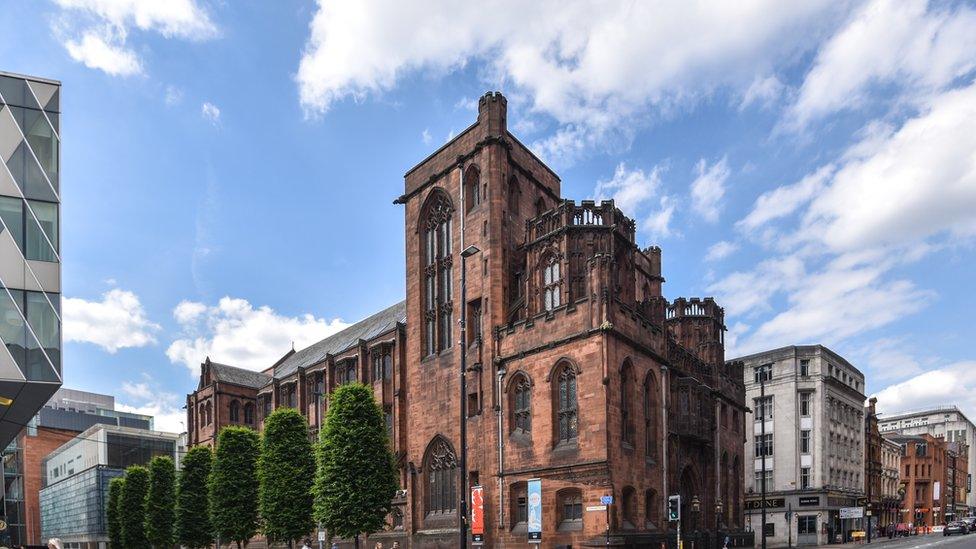Battersea power station and The Piece Hall among landmarks given new life
- Published
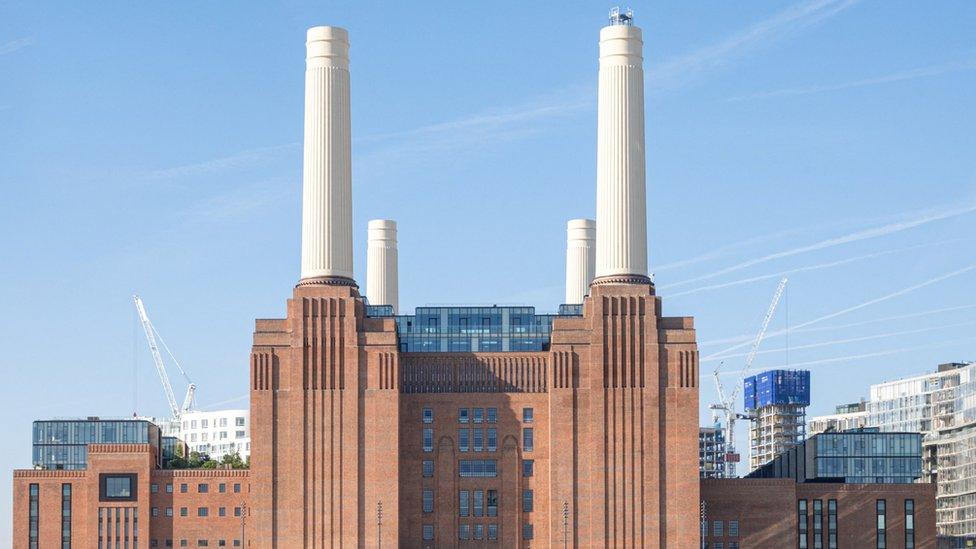
Battersea Power Station's four chimneys were dismantled and rebuilt as part of the renovation
The BT Tower, an iconic feature of London's skyline, is set to be turned into a hotel after it was sold for £275m. It joins a list of landmarks across England that have been converted for new ventures, as the country and its buildings evolve.
Battersea Power Station, London
Perhaps one of the most recent and impressive renovations was that of Battersea Power Station, which reopened in 2022 after decades of decay.
Looming over the River Thames, the beloved Art Deco edifice was transformed into a shopping and leisure complex during a 10-year project which saw its four famous white chimneys dismantled and rebuilt, due to the corrosion of their steel structures.
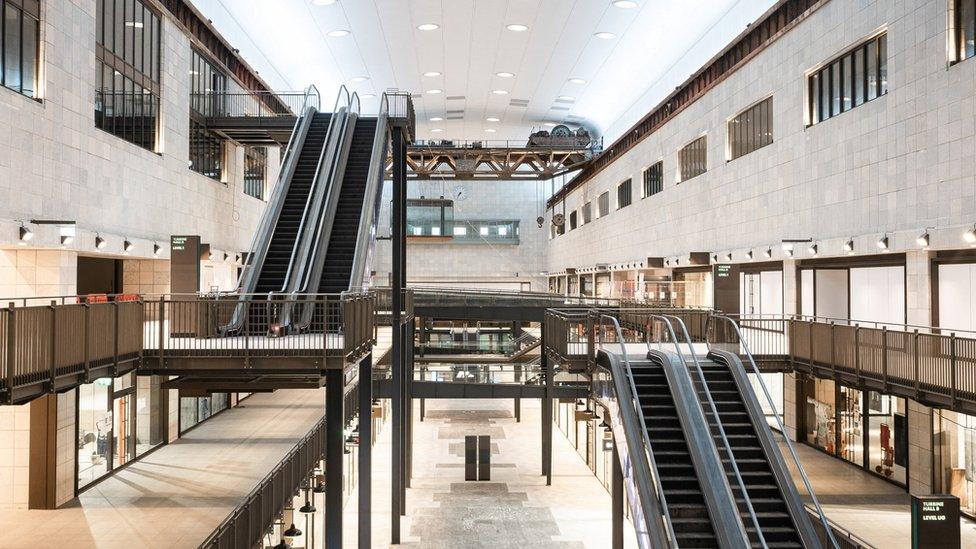
The restored Turbine Hall B dates back to the 1950s

Turbine Hall B was an empty shell when the project began
The power station's distinctive brickwork was, where necessary, meticulously recreated. Two firms that made bricks for the original buildings were called on to supply 1.75 million matching replacements.
The roof of the building also had to be replaced. It was removed by a previous owner as part of a doomed project to turn the power station into a theme park, external.
More than three times the quantity of steel used to construct the Eiffel Tower was used in the rebuild, its developer Battersea Power Station Development Company said.
The Piece Hall, Halifax

The Piece Hall's summer of music last year concluded with Limp Bizkit playing one of only two UK shows there
In West Yorkshire, the world's only remaining Georgian cloth hall, The Piece Hall, is becoming a sought-after venue for global artists to perform at.
Singer Jessie Ware likened it to playing a gig in Venice, and frontman of rock band James, Tim Booth, said he felt as if he was on an open-air stage at an Italian piazza when they performed last July.
Built in 1779 for the trading of cloth, the extraordinary building in Halifax's town centre has been its best kept secret for more than two centuries.

James frontman Tim Booth said playing the Piece Hall in Halifax was like performing in an Italian piazza
It has had a rich and varied past, but fell into such a state of disrepair that it narrowly escaped being condemned more than once.
It was rescued with a £19m refurbishment and since reopening in 2017, has become one of West Yorkshire's leading tourist attractions.
The original 315 units in the arcades, that were once used for storing and trading "pieces" of cloth, now contain shops, cafes and offices.
The Piece Hall's central courtyard was levelled to create a new piazza with capacity for up to 7,500 people, and new lighting, seating and water features were installed.
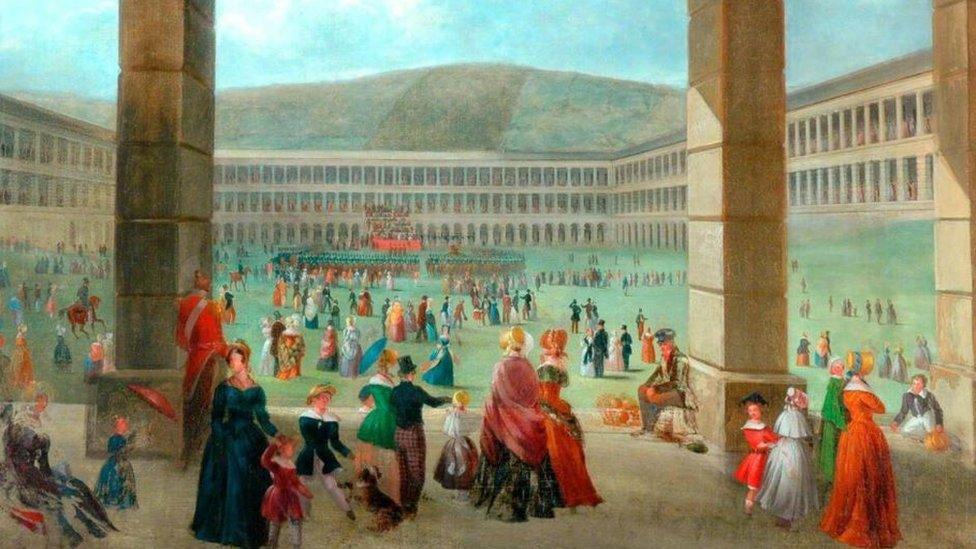
This picture shows the hall in its early days - originally a trading centre for "pieces" of locally-made cloth
HMP Oxford
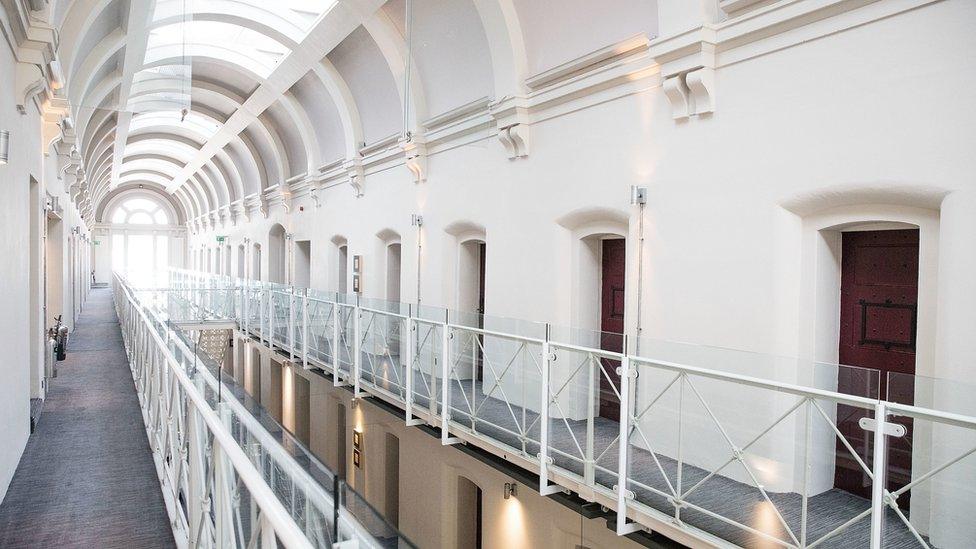
Malmaison Oxford's history dates back to the 11th Century when the building was Oxford Castle
Malmaison Oxford is a boutique hotel opened in 2005 that was formerly HMP Oxford from 1888 to 1996.
The building can trace its history back to Oxford Castle in the 11th Century, but it was rebuilt and turned into a prison after the English Civil War.
Almost a decade after its closure, HMP Oxford was bought by the Trevor Osborne Property Group and leased to the Malmaison hotel chain, with around £20m spent in total on the complex.
The now-luxury hotel uses original features including metal staircases, cell doors, and the prison atrium.
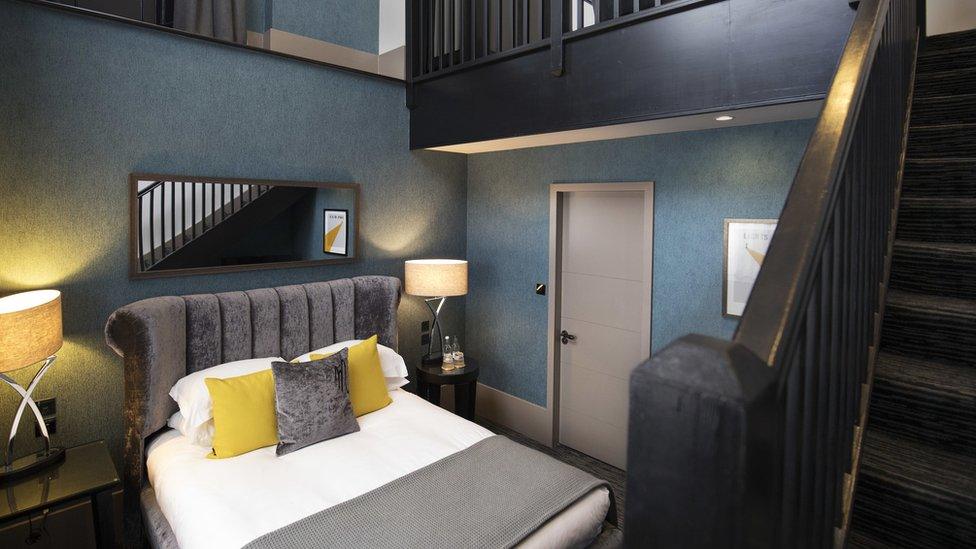
The luxury hotel has preserved original features of the prison
The Baltic Flour Mill, Gateshead
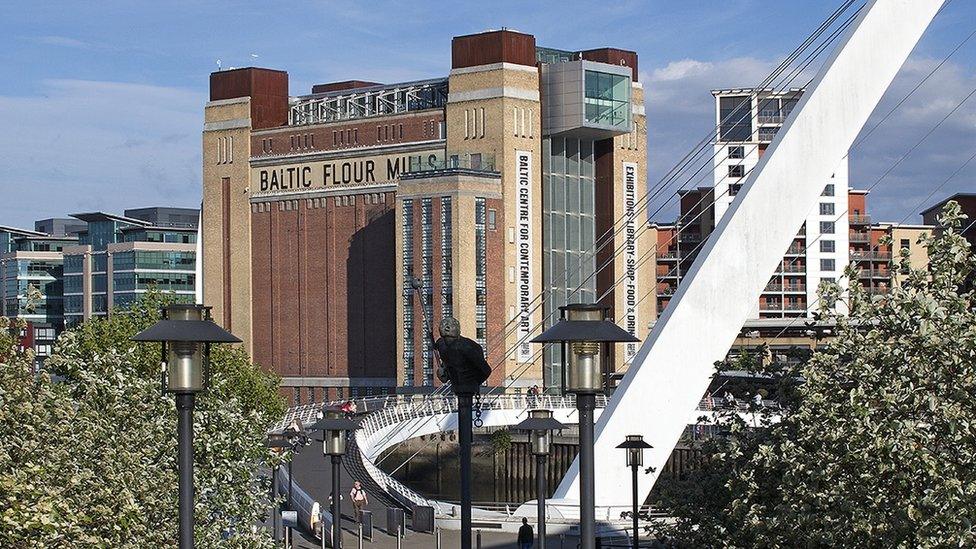
Baltic Centre for Contemporary Art still contains the grain hoppers of the previous flour mill that occupied the building
Gateshead's Baltic Centre for Contemporary Art opened its doors in July 2002, following a £33.4m renovation of the former Baltic Flour Mill.
Towering 138ft (42m) high over Gateshead quayside, it has 2,600 sq m of exhibition space.
The building was originally designed by Hull-based architects Gelder and Kitchen and officially opened in 1950, at one time employing about 300 people.
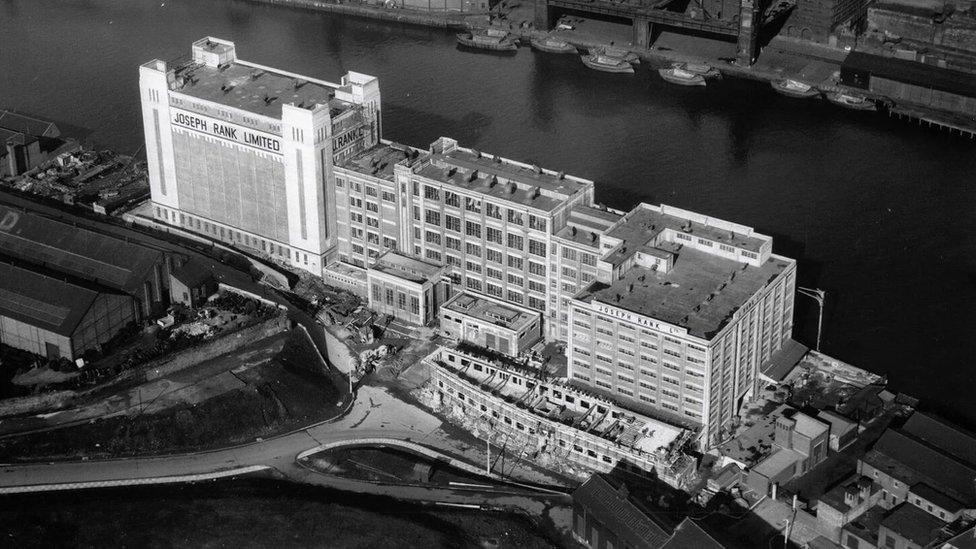
The only building that was preserved from the original mill is the tall silo building (pictured far left)
The 22,000 tonne-capacity silo building that was used to store materials is the only remaining part of the original mill at the centre, which now curates and produces contemporary art exhibitions.
Gateshead Council says the Baltic Flour Mill was most probably named after the Baltic Sea, as other mills that were opened around the country by food business Rank Hovis - Ocean Mill, Solent Mill, Atlantic Mill - were named after seas or rivers.
The Rotunda, Birmingham
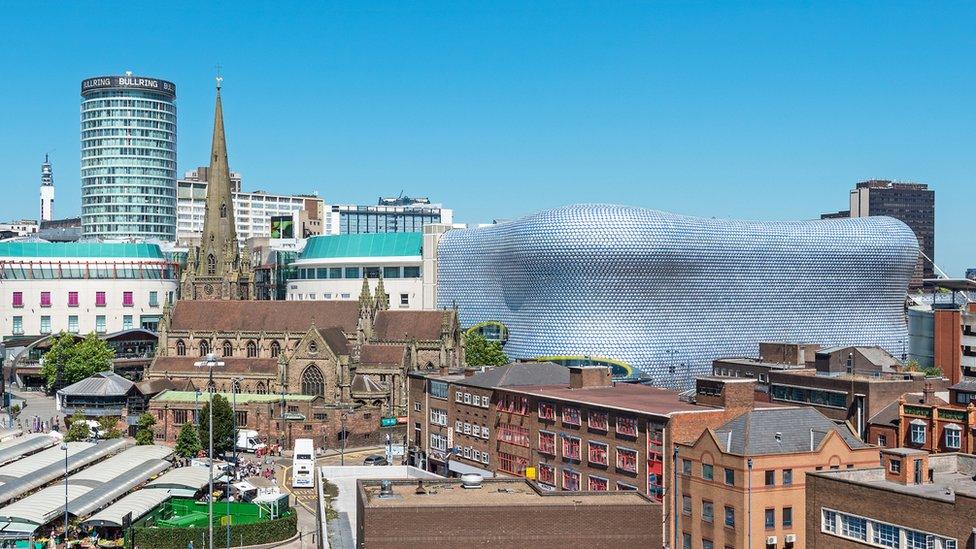
The cylindrical Rotunda building (far left) has been a prominent feature of Birmingham's skyline since the 1960s
The Rotunda is a 20-storey circular skyscraper in Birmingham home to apartments, serviced apartments, and shops.
The original architect, the late James Roberts, designed the building as an office block when it opened in 1965 but lived on the top floor for many years in a penthouse, according to the operator of its serviced apartments, Staying Cool, external.
But the building became a symbol of unnecessary redevelopment as very few of the offices were ever let. Its base originally housed a bank, shops, and leisure outlets, and formed part of the central shopping district known as the Bullring.
In its time, the Rotunda has survived a number of events including a suspected-IRA bombing in 1974 and the threat of demolition in 1993.
In 2000, it was saved by English Heritage and given a Grade-II listed building status, but sat empty until 2005 when restoration work started to create a new-look Rotunda.
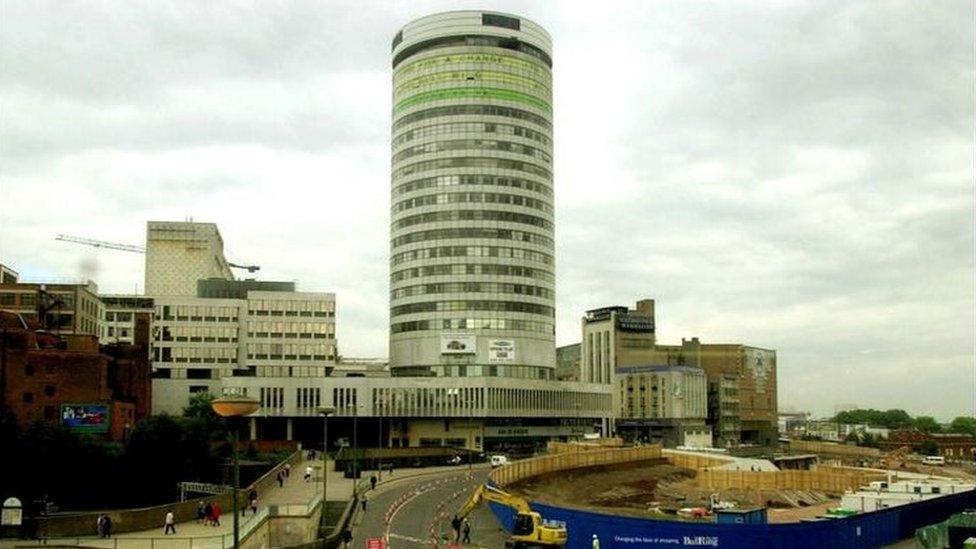
The Rotunda, pictured here in 2000, became a symbol of unnecessary redevelopment as very few of its offices were ever let
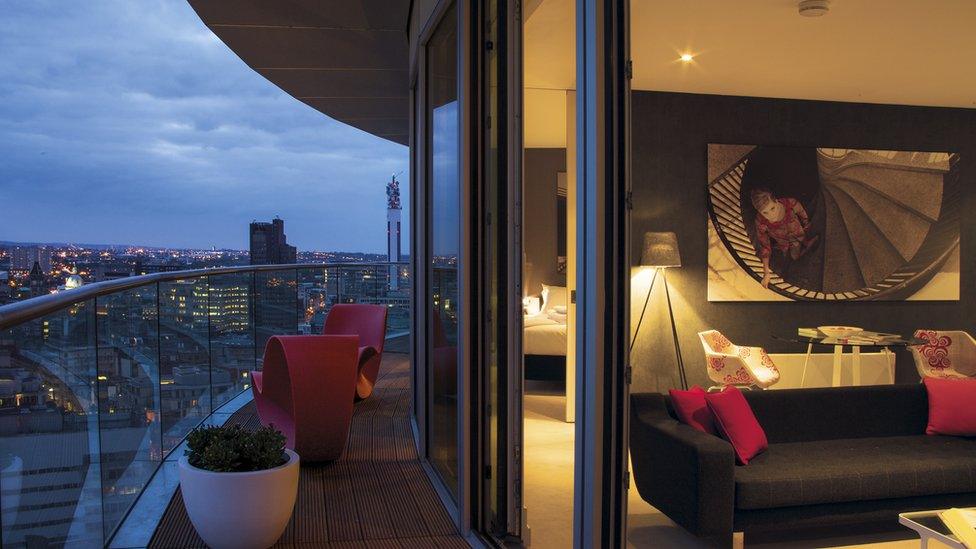
The Rotunda has 234 apartments, made up of studios, one and two-bed apartments, duplexes, and penthouses
The building now has 234 apartments, made up of studios, one and two-bed apartments, duplexes, and penthouses.
Related topics
- Published20 February 2024
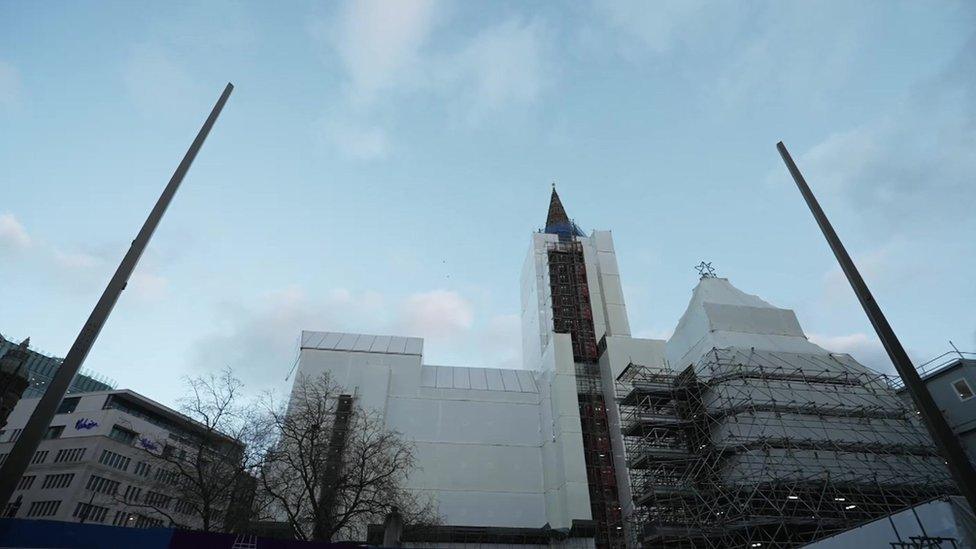
- Published13 February 2024
